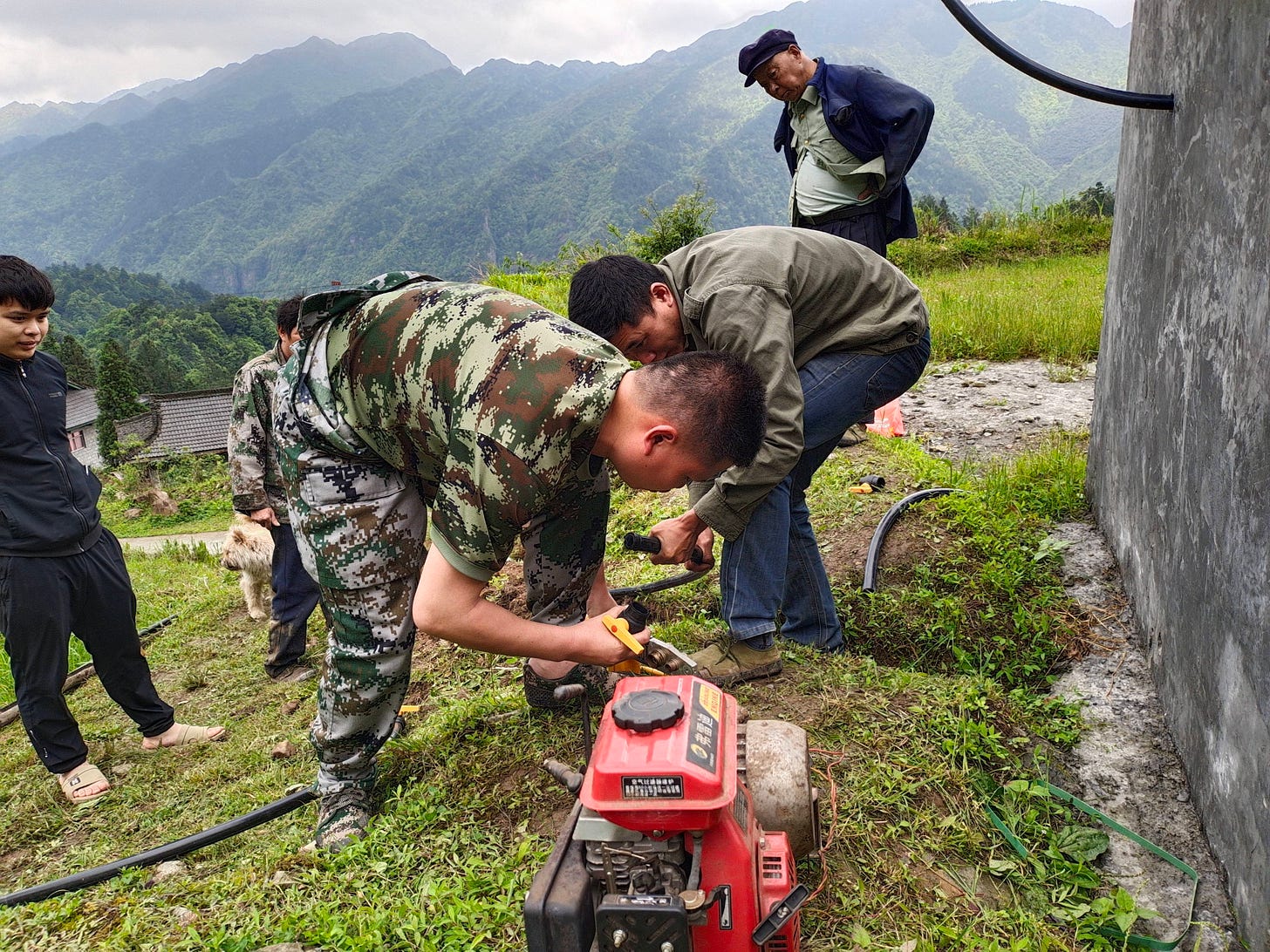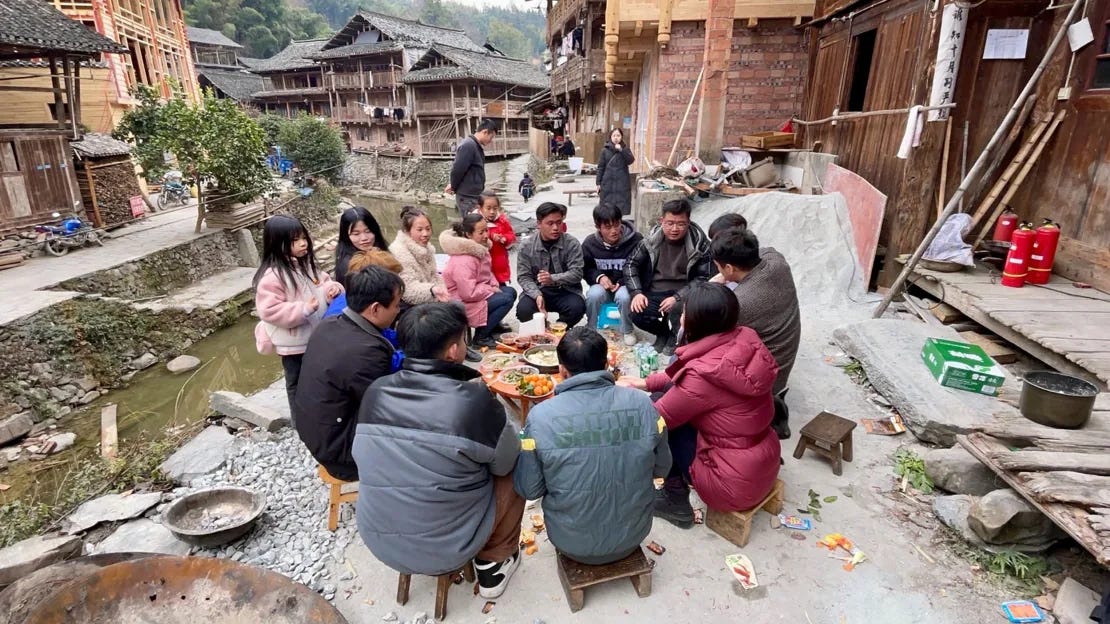As 2024 concludes, rural China is navigating a critical period marked by notable policy changes, evolving economic approaches, and shifting social dynamics. This final feature of 2024 provides a summary analysis of the major developments over the past year, examining how these shifts have influenced rural communities and their futures. It also looks ahead to the challenges and potential opportunities in 2025, focusing on the intricate balance between state-led initiatives, local needs, and broader socio-economic trends.
Policy Landscape: Reinforcing Rural Economies
In 2024, the Chinese government intensified its focus on rural revitalisation, emphasising food security and sustainable development. The “No. 1 Document” (中央一号文件), traditionally the first policy statement of the year, underscored the imperative of enhancing grain production capacity by 50 million metric tonnes, reflecting a commitment to bolstering agricultural output and ensuring national food security.
Concurrently, the enactment of the Rural Collective Economic Organisations Law (农村集体经济组织法) marked a significant legislative milestone. Scheduled to take effect on 1 May 2025, this law aims to strengthen farmers’ land rights and redefine the roles of rural collectives, granting farmers greater oversight and addressing longstanding issues related to land disputes and social unrest.
Economic Initiatives: Stimulating Consumption and Investment
China’s Ministry of Finance announced plans to increase fiscal support for consumption in the coming year to counteract economic headwinds. Measures include raising pensions and medical insurance subsidies, promoting trade-ins of consumer goods, and encouraging social investment through expanded effective investment. These steps are designed to enhance citizens’ livelihoods and stimulate domestic demand, particularly in rural areas.
Additionally, the government unveiled a decade-long plan to boost cereal grain consumption from 2024 to 2035. This strategy seeks to elevate production standards, invest in research, and enhance international cooperation to strengthen food security, aiming to reduce reliance on imports and promote the health benefits of domestic grains.
Social Dynamics: Addressing Inequalities and Promoting Inclusivity
Despite policy efforts, systemic challenges persist. The hukou system, established in 1958, continues to create significant social and economic disparities, particularly affecting rural-to-urban migrants who face restricted access to high-quality education, healthcare, and job opportunities in wealthier municipalities. While there have been attempts to relax these rules, especially in mid-sized cities, strict controls remain, preserving privileges for urban residents and reinforcing divisions.
In response, recent policies signal a promising future for children. They aim to ensure that migrant children have access to quality education, healthcare, and social services, regardless of their parents’ hukou status. This initiative represents a significant step towards a more equitable and family-friendly society.
Public Opinion and Lived Experiences
Public opinion in rural areas reveals mixed sentiments towards these developments. A survey conducted by the Rural Development Research Centre at Renmin University highlighted concerns about the adequacy of government support in addressing daily challenges. Farmers in Henan province expressed optimism about the Rural Collective Economic Organisations Law, hoping it would resolve long-standing land disputes. However, some noted scepticism about its implementation, citing previous issues with local corruption.
Interviews with rural residents in Anhui province reflect ongoing struggles with healthcare accessibility despite increased subsidies. “We hear about the policies, but in reality, the clinics are still underfunded, and we often have to travel far for proper treatment,” said one villager. These perspectives underline a gap between policy intentions and grassroots realities.
Specific Rural Socio-Economic Challenges
In regions like Guizhou and Yunnan, poverty alleviation remains an uphill battle. Case studies from Guizhou reveal that while infrastructure projects have improved connectivity, many households still face income instability due to fluctuating agricultural yields. In Yunnan, interviews with tea farmers show a divide between small-scale producers and larger cooperatives, with the former struggling to access markets dominated by well-capitalised players.
Natural disasters in 2024 further exacerbated vulnerabilities. Flooding in Jiangxi province displaced thousands of rural families, highlighting the urgent need for enhanced disaster resilience measures. Reports indicate that local governments responded with emergency aid, but long-term recovery remains slow due to limited resources.
Grassroots Implementation and Feedback
Local governments and community organisations have played critical roles in implementing national directives. In Shandong, pilot projects for agri-tech integration have seen significant adoption among farmers, with technologies such as drone-assisted planting and AI-driven crop monitoring increasing efficiency. Participant feedback suggests that while these innovations are beneficial, high initial costs remain a barrier for many smallholders.
Community-led initiatives in Sichuan provide another example. Grassroots collectives have been instrumental in promoting sustainable farming practices that align with national environmental goals. A village cooperative leader noted, “The government provided guidelines, but it’s the local networks that made these changes possible by sharing knowledge and pooling resources.”
Environmental Sustainability: Navigating Climate Challenges
Environmental sustainability remains a critical concern. The Sustainable Fodder Production and Low Methane Livestock Development Programme (可持续饲料生产和低甲烷牲畜发展计划), approved in June 2024, aims to improve productivity, lower greenhouse gas emissions, and enhance climate resilience in the livestock sector, particularly in Gansu province. This programme reflects China’s broader commitment to integrating environmental considerations into rural development strategies.
Looking Ahead: Prospects for 2025
As we approach 2025, several themes are poised to shape the trajectory of rural China:
Economic Rebalancing: The government’s efforts to stimulate consumption and reduce reliance on exports will be pivotal. The success of consumer trade-in programmes and other fiscal measures will determine the extent of economic recovery and growth.
Technological Integration: Initiatives such as “Made in China 2025” aim to make China dominant in global high-tech manufacturing. Integrating technology into rural economies, including agri-tech advancements and rural e-commerce, will be crucial in modernising agricultural practices and improving livelihoods.
Urban-Rural Integration: Policies promoting coordinated and sustainable shifts from rural to urban areas, known as rural-urban transformation, will continue influencing demographic patterns and resource allocation. Ensuring this transformation benefits urban and rural populations will be essential for balanced development.
Conclusion: The Imperative of Sustained Focus
The developments of 2024 underscore the complexity and dynamism of rural China. As the foundation upon which the nation rises, rural regions are integral to China’s cultural identity, economic stability, and social cohesion. A nuanced understanding of these areas is essential for academics, policymakers, and observers alike. As we move into 2025, sustained inquiry and engagement with the realities of rural China will be crucial in navigating the challenges and harnessing the opportunities that lie ahead.







Thanks for this article providing a good overview of 2024 initiatives. The divide between small producers and larger conglomerates is pertinent - could you please elucidate on the central government's plans to empower small producers? As the Sichuan example you give elucidates, local community involvement is crucial to success. From your article, there seems to be ups and downs in the success of implementing central government initiatives.